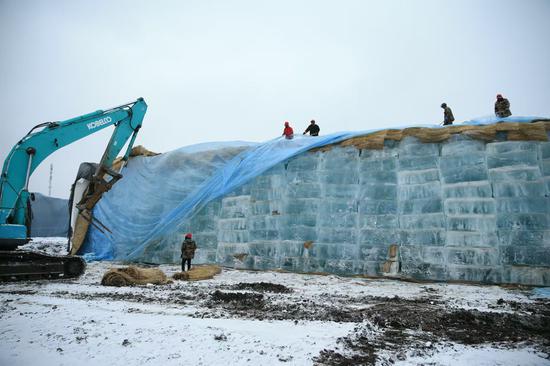The national-level shale oil demonstration zone in Jimsar county, Xinjiang Uygur autonomous region, recently reported an output of more than 1 million metric tons so far this year, the first of its kind in China to break such a record, marking a milestone in the country's shale oil exploitation and contributing to overall energy security.
Shale oil is a petroleum resource stored in shale formations, which are layered in the Earth's crust like the pages of a book. Unlike conventional oil, which is typically found in liquid form in large underground reservoirs, shale oil is trapped within the tiny pores of shale rock. This makes it more difficult and expensive to extract.
For a long time, shale oil was considered to have no economic value for extraction. It wasn't until the beginning of this century, influenced by the global increase in oil demand and the decline in conventional oil resources, that shale oil gradually gained greater attention.
While the United States leveraged its shale oil revolution to shift from an oil importer to a net oil exporter, the major breakthrough in Xinjiang is of great significance to China's energy security, said Tang Yong, an expert from the Xinjiang research institute of Huairou Laboratory, a national scientific research organization.
"The theories, technologies and management practices from the Jimsar zone will serve as a model for the country's shale oil industry," Tang said.
China's recoverable shale oil reserves rank third worldwide, and are primarily distributed across five large basins including Ordos, Songliao and Junggar, as well as eight medium and small basins such as Qaidam, Jianghan and Subei.
The National Energy Administration said domestic shale oil production surpassed a record-high of 4 million tons last year.
The Jimsar zone in Junggar Basin was jointly established in 2020 by the Xinjiang and Tuha oilfield branches of China National Petroleum Corp. It has estimated reserves exceeding 1 billion tons. It is one of three national demonstration zones for shale oil in China in addition to another two in Heilongjiang and Shandong provinces.
According to the plan, the Jimsar zone is expected to realize an annual production of shale oil of 1.7 million tons by 2025, with the Xinjiang oilfield branch accounting for 1.4 million tons and Tuha oilfield branch producing 300,000 tons.
Shale oil is extremely difficult to extract, requiring the drilling of horizontal wells and fracturing of oil-bearing shale, creating artificial fractures with water and other items. Engineers often describe this process as "squeezing oil from a whetstone".
"For conventional oil reservoirs, some wells will naturally gush oil after being drilled, but shale oil wells generally have no natural productivity and require fracturing to extract the crude oil," said Zhao Xionghu, a professor at the petroleum school of China University of Petroleum-Beijing at Karamay in Xinjiang.
Zhao said shale oil has low permeability, making it difficult for reservoir stimulation, which requires continuous technological updates to reduce production costs.


















































 京公网安备 11010202009201号
京公网安备 11010202009201号